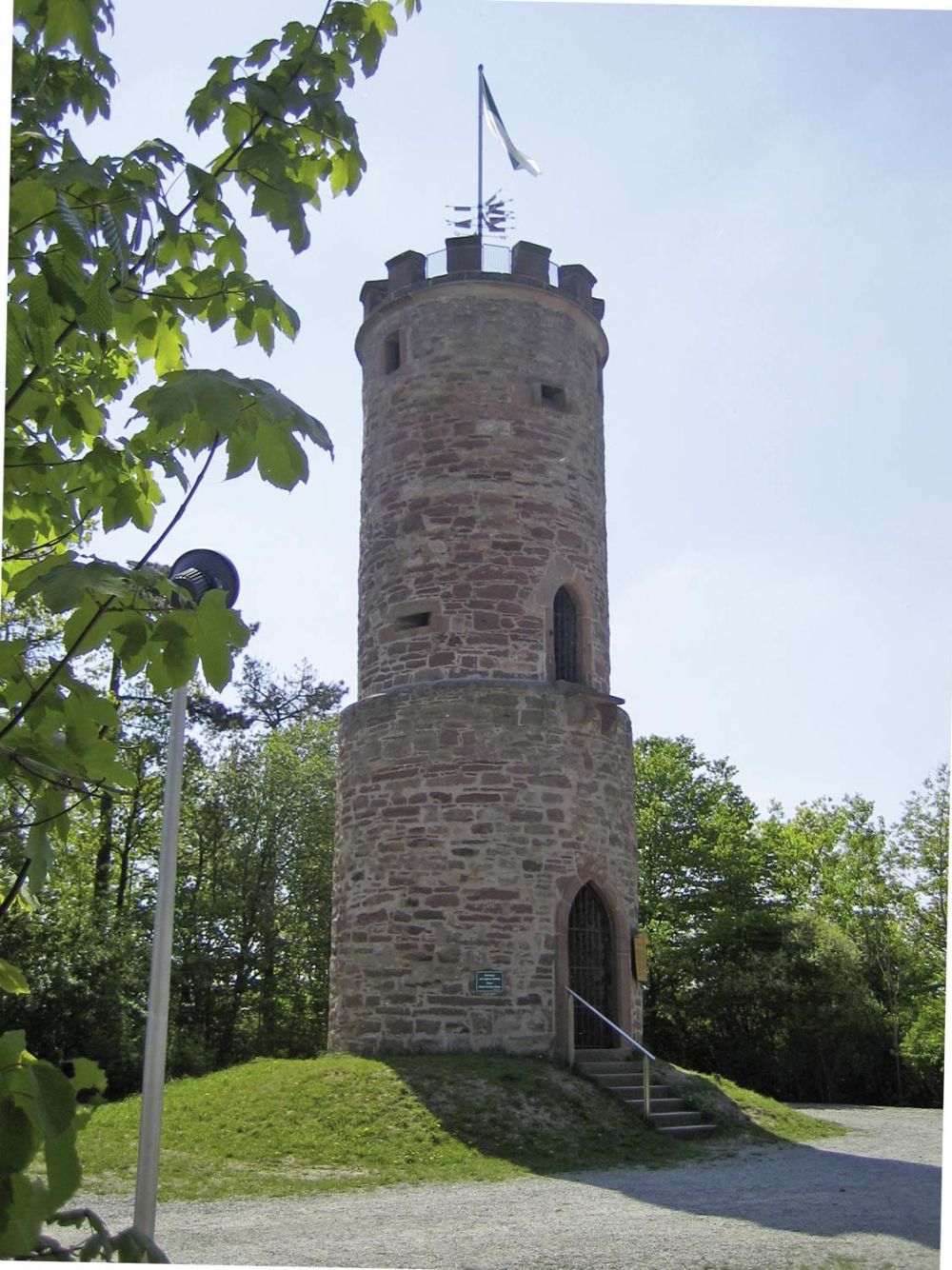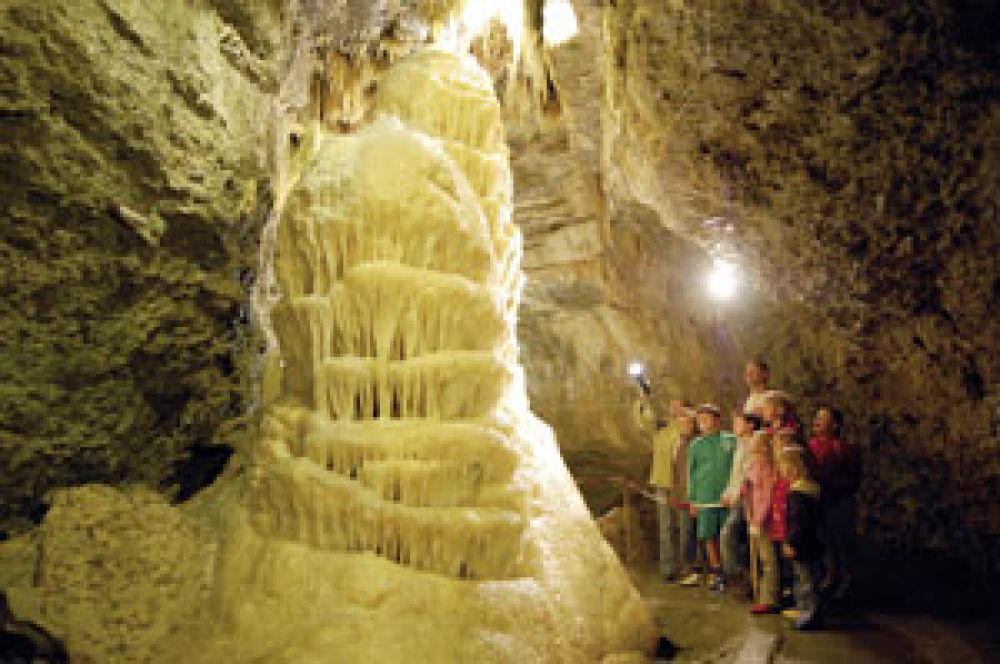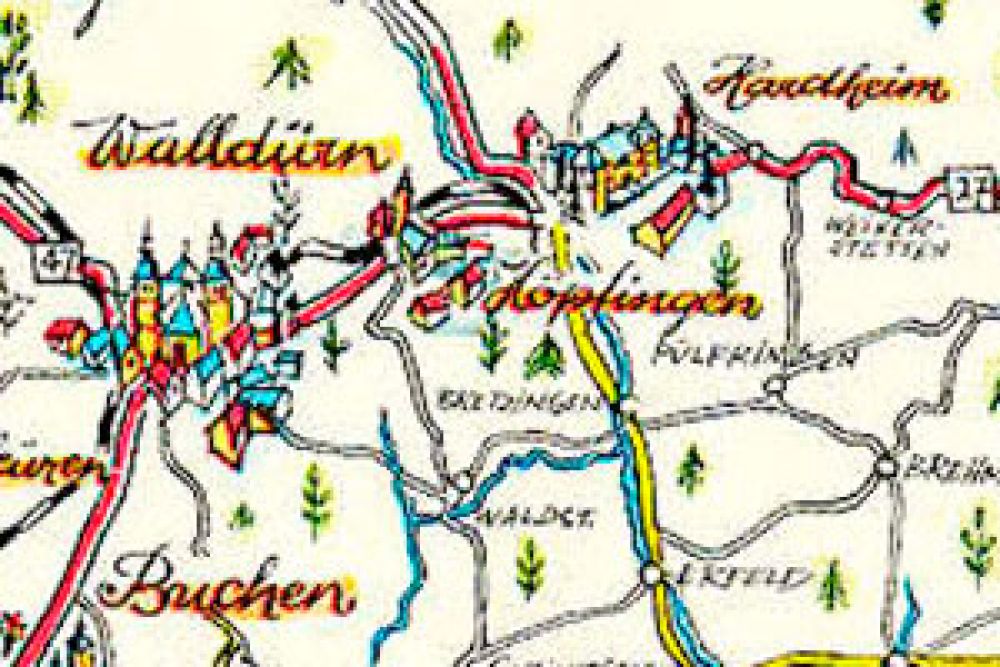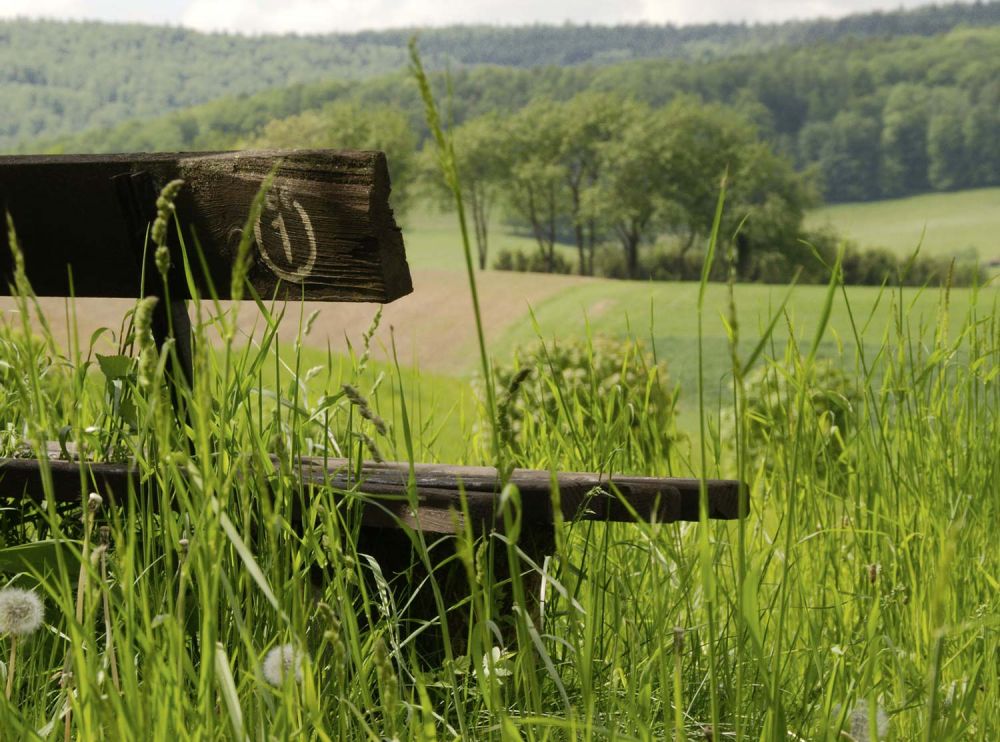
Watchtower (Wartturm)
The watchtower is 14 metres tall and is situated on a hill called “Wartberg” (394 metres above sea level) to the southeast of Buchen. According to its inscription is has been constructed or rebuilt in 1490.
It was used as an observation tower in times of war, in order to be able to warn the population of the highly fortified medieval town of advancing enemy troops. As can be seen in the oldest illustration dating from 1593, at that time the tower, equipped with a hipped roof, was freestanding to facilitate the unobstructed view in all directions.







